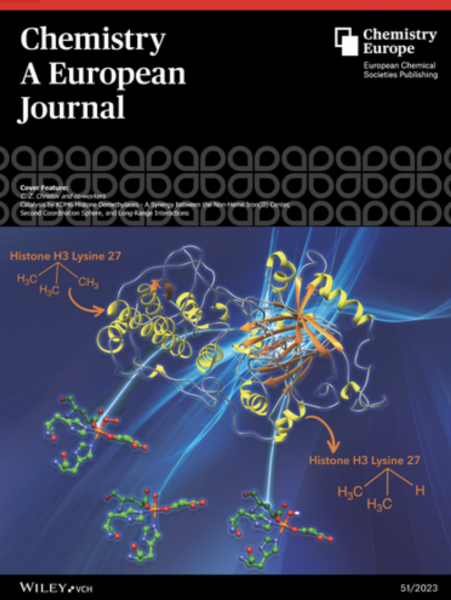
A team from the Department of Chemistry led by Associate Professor Tatyana Karabencheva-Christova and including Ph.D. student Ann Varghese (first author); former Ph.D. students Sodiq Waheed ’23 (Ph.D. Computational Chemistry, currently a researcher at Lilly Corporate Center, Indianapolis) and Shobhit Chaturvedi ’22 (M.S. Ph.D. Chemistry, currently a postdoctoral researcher at UCLA); and undergraduate students Isabella DiCastri, Ciara LaRouche and Brendan Kaski has published an article in Chem Catalysis.
The article is titled “Revealing the catalytic strategy of FTO.” It provides unique insight into the catalytic mechanism of the fat-mass and obesity-associated protein (FTO), which is an Fe(II)- and 2-oxoglutarate (2OG)-dependent oxygenase targeted for treating obesity and cancer. The study reveals that the mutant R316Q, which is related to diseases, slows down the O2 activation and hydrogen atom transfer rates.
Professor Christo Christov (Chem) is a collaborator in this study, along with Nicolai Lehnert of the University of Michigan and Deyu Li of the University of Rhode Island.
The study is funded by the National Institutes of Health grant 2R15GM132873-02.
About the Chemistry Department at Michigan Technological University
Chemists at Michigan Technological University help students apply academic concepts to real-world issues and advance research making contributions to health and well-being, environmental protection, responsible use of materials, and climate stabilization. The Chemistry Department offers five undergraduate degrees, an MS and PhD in Chemistry, and an accelerated MS. Supercharge your chemistry skills to meet the demands of a technology-driven society at a flagship public research university powered by science, technology, engineering, and math. Graduate with the theoretical knowledge and practical experience needed to solve real-world problems and succeed in academia, research, and tomorrow’s high-tech business landscape.
Questions? Contact us at chemistry@mtu.edu. Follow all the latest happenings on the Chemistry Blog.
